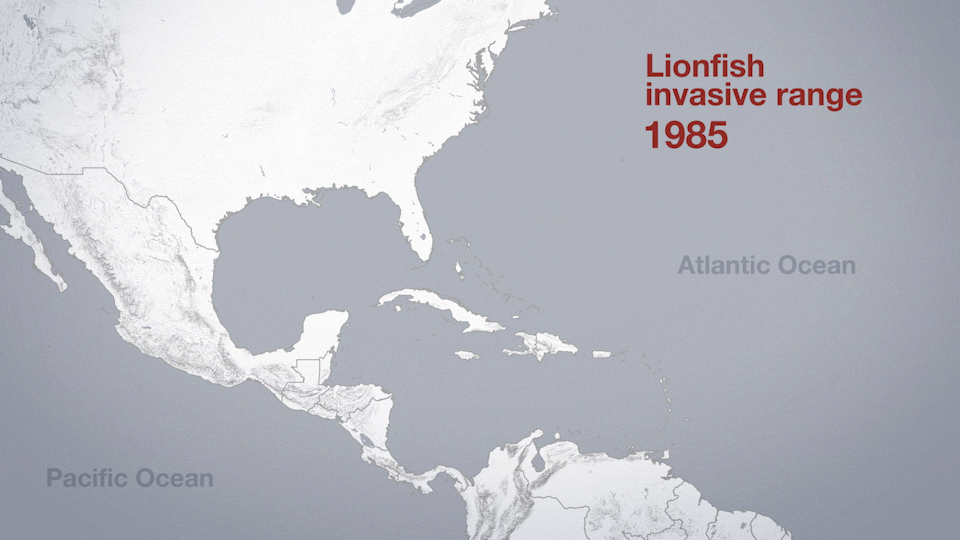Introduction
Lionfish are beautiful, hardy fish that live in warm, tropical waters. They are native to the coral reefs of the South Pacific and Indian Ocean. In 1985, lionfish appeared somewhere far away from their natural habitats: in the Atlantic Ocean off the east coast of Florida. They may have been released there on purpose from someone’s home aquarium.
Watch the animation below to see how lionfish have spread over time. As you watch, think about the patterns you see in the growth of the lionfish’s range and what might cause these patterns.
Spread of lionfish from 1985 to 2019

An animated map of the east coast of North and South America tracks the lionfish populations with red dots from 1985 through 2019. The populations started on the south coast of Florida in 1985 and in subsequent years spread up the eastern coast of Florida then then further up the east coast to the midatlantic in the early 2000s and in 2010 spread through the carribean ocean and then by 2019 it had spread along the west coast of Florida and the gulf coast.
Data provided by USGS
Watch an interview below with marine biologist Stephanie Green to learn more about lionfish.
Transcript or description of video.
In the Atlantic Ocean, lionfish are an invasive species, a species that spreads through and harms a habitat where it is not native. Lionfish are harmful because they prey on native fish and invertebrates. As lionfish populations grow, they may kill many of the native animals, which negatively affects biodiversity and ecosystem dynamics.